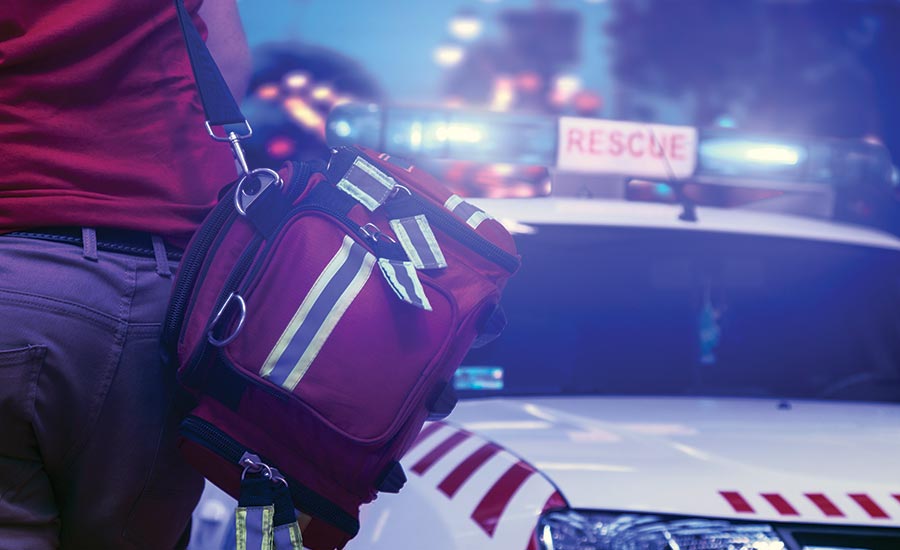Emergency & Medical Response Planning for Mass Casualty Terror Attacks


Dean C. Alexander


This article addresses lessons learned from selected mass casualty terror attacks in Western Europe (Nice, Paris, Brussels and Oslo) and the United States (Orlando, San Bernardino and Boston). In particular, the piece reviews these terror incidents, and addresses their consequences on emergency management and medical response planning. The March 2017 terror attacks in London resulted in four deaths and more than 50 injuries, underscoring the continued specter of these incidents and the crucial roles first responders and medical professionals play in addressing them.
Background
Mohamed Lahouaiej-Bouhlel plowed a truck through pedestrians who viewed fireworks on Bastille Day 2016 in Nice. The attack resulted in 86 fatalities and more than 400 injured. All but one of those who perished did so within hours of the incident. Ten children and teenagers were killed in the attack. Police killed Lahouaiej-Bouhlel as he left the truck and shot at them.
The March 2016 attacks in Brussels comprised three suicide bombings: two at an airport, and another at a subway station an hour later. The attackers – brothers Ibrahim and Khalid el Barkroui and Najim Laachraoui – killed 35 persons and injured 300 others. Given the nature of the modus operandi, the three suicide bombers were killed instantly. Another explosive device was discovered by police at the airport and detonated safely.
The November 2015 Paris attacks involved operatives separated into teams equipped with assault rifles and suicide bomb vests. The perpetrators attacked assorted targets including a sports stadium, concert hall, bar, cafés and restaurants, utilizing both modalities. The incidents resulted in 130 persons killed and injuries to more than 360 others. Eight terror operatives were killed during the course of the incidents. Others involved in the plot were later killed in a standoff with police, arrested, or escaped.
The Islamic State/ISIS directed the Paris and Brussels incidents. The Nice attack appears to have been inspired by the group.
In July 2011, Andres Breivik undertook the deadliest attack in Norway since World War II. In Oslo, Breivik detonated a bomb at a government building, killing eight persons and injuring more than 90 others. Later that day, he conducted a mass shooting at a Labor Party’s Workers Youth League event at an island near Oslo. That onslaught resulted in 69 deaths, and more than 60 injuries.
After a delayed response by Norwegian police, Breivik surrendered to authorities at his second target. In August 2012, he was convicted of mass murder and other related crimes. Breivik was sentenced to 21 years in prison, the maximum under Norwegian law. He appears to have embraced white nationalist and neo-Nazi ideologies, accompanied by anti-Muslim precepts.
In June 2016, the deadliest mass shooting in U.S. history took place in Orlando. A lone gunman, Omar Mateen, attacked patrons at a gay nightclub with a semi-automatic rifle and handgun. The resulting carnage was 49 deaths and 53 injuries. Mateen was shot and killed during a shootout with police following extended hostage negotiations.
The November 2015 San Bernardino attackers, Syed Rizwan Farook and Tashfeen Malik, shot and killed 14 and injured 22 others at a government office. The couple used semi-automatic weapons in their assault. Also, the attackers left several improvised explosive devices that fortunately did not detonate.
The terrorists were killed during a five-minute shootout with police four hours after the terror incident began. The perpetrators’ demise took place on a street some two miles from the attack site.
In April 2013, the Tsarnaev brothers detonated two pressure cooker bombs near the finish line of the Boston Marathon, killing three and injuring more than 260 others. One of the brothers, Tamerlan, was purportedly killed when his sibling Dzhokhar drove over him while trying to escape from police. Dzhokhar was ultimately captured, convicted on multiple murder counts and other charges, and sentenced to death.
The Islamic State/ISIS is believed to have inspired the perpetrators in the Orlando and San Bernardino incidents. Various jihadist ideologies seem to have motivated the Boston attackers.
General Findings
Despite some commonalities, each incident posed unique challenges arising from a variety of factors, such as the number of perpetrators in the attack, weapons used, number of sites involved in the attack(s), number of persons killed and wounded, readiness and capabilities of first-responders – particularly the medical community – and vagaries such as the time of day of the incident, proximity to hospitals and types of triage at the attack sites.
Of the terror attacks addressed here, the highest death toll (130) occurred in Paris when multiple operatives used a variety of modus operandi to inflict damage. The fatalities arising from determined lone wolves in the cases of Nice (86), Oslo (77) and Orlando (49), demonstrate the lethality that can arise from even a single person perpetrating an attack.
Another factor to consider is whether terror incidents are one-off events, or part of a larger cycle of attacks spanning multiple hours or days. As in the Boston attacks, secondary explosions may occur within seconds or much longer after a first detonation.
An incident may initially comprise an active shooter situation, but improvised explosive devices can be set for detonation after the attackers leave the target area, as witnessed in the San Bernardino barrage. Active shooter situations can transform into hostage situations as in the Orlando attack and the Bataclan theater segment of the Paris incidents.
Prior active shooter drills and emergency preparedness instruction proved to be helpful in responding to high-casualty incidents. Utilizing interdisciplinary training – encompassing medical, law enforcement, emergency management, and fire services – aids in effective responses as participants become aware of what each group is responsible for during a crisis. Moreover, collaborative training, including with the private sector, contributes to forging solid social networks and confidence in partners.
Hospitals may establish an incident command center, often based outside the emergency department. Specially designated trauma centers are well equipped to deal with injuries that occur during mass casualty terror attacks. Other hospitals, too, can serve key roles in treating the wounded when such incidents strike a city.
Once hospitals begin accepting victims of mass casualty attacks, they may raise their security posture. Besides victims and their families, hospitals may contend with an inflow of first responders, the media and the public.
Serendipity can play a role in such incidents, including having attacks occur close to a hospital, senior staff already present at the hospital during the attack and recently completed training on mass casualty attacks. The Orlando attack took place about one-third of a mile from the Orlando Regional Medical Center and directly opposite an Orlando fire station.
The success of law enforcement in neutralizing terrorists as quickly as possible once an incident commences facilitates access to the victims. Some incidents allow for access to the injured within minutes. Others may take longer due to a remote location or the extended nature of the attack (e.g., a hostage situation or time in securing the area prior to reaching the victims). Helicopters can aid in bringing wounded to hospitals more rapidly than by other means, particularly when remote sites are involved.
Dozens of ambulances may appear at staging areas shortly after an attack. Short transport times to medical facilities raise the chances of survival but do not guarantee it.
After large-scale attacks, cellular and other telephone communications may be limited as the systems become overwhelmed. Alternative communication methods should be established beforehand (e.g., radio communications, internal networks and email), as rapid, unfettered dissemination of information is critical in such crises.
Emergency Plans
Cities that anticipated a possible masscasualty terror attack were well prepared to respond to the terror that they experienced. Emergency departments benefit from establishing procedures to respond to mass casualties. Also, back-ups can contribute to improved responses.
In some instances, a triage tent was set up outside of the emergency department. Also, triage areas can be established near the incidents themselves so the wounded can be tended to initially, prior to transport for further care.
Following an incident, a medical facility may declare a Code Black, meaning only terror patients will be accepted into the hospital. Hospitals must keep the issue of security in mind as the hospital could become a target of an escaping terrorist or designated as a secondary target from the onset.
The seriousness of the Paris attacks resulted in the activation of the Plan Blanc (White Plan), which called upon 40 public hospitals in the city to marshal additional staff, cancel non-urgent procedures and create space for the influx of prospective victims. In Nice, a hospital emergency plan for mass casualty attacks – the White Plan – was activated quickly once the severity of the incident was understood. The Health Regional Agency initiated an incident command base that reached out to neighboring hospitals and located available beds.
Emergency exercises, including simulations, aided medical preparedness in Nice. Such programs were undertaken after the November 2015 Paris attacks, and in anticipation of threats arising from the European Football (Soccer) Championships.
Proximity to a Target
The proximity of a hospital to an attack can be critical in getting the injured to medical care rapidly, but also may create challenges to access due to spillover effects of attacks (e.g., shooters going to other locations for additional targets as well as securing the perimeter and crime scene). As noted earlier, reaching a hospital quickly does not ensure a patient’s survival.
Specially trained medics may enter warm zones – areas where an active shooter might be present – with law enforcement (often SWAT personnel) to assess the status of each victim, and their chances of survival. In such cases medics may treat patients prior to the apprehension or neutralization of the perpetrator(s). The risks to such medical personnel should not be underestimated.
At pre-hospital triage, patients may be separated into immediate/delayed emergency status, minor emergencies, and dead or dying. Accordingly, patients are distributed to respective hospitals for varied levels of care.
Medical facilities face the challenge of treating many severely wounded individuals in multiple waves. The chaos and fluidity of such incidents may complicate the tagging and tracking of patients.
Coupling multiple terror modalities – gunfire and explosives, as took place in Paris – provides the medical field with the challenges of treating such concomitant wounds. Against that backdrop, one demarcation setting for the wounded included: the critically wounded, those needing immediate treatment, and those who could be sent home within a day. Determining which patient to treat first over another can prove burdensome if a high number of casualties are involved.
Depending on the location targeted, there could be a large variance in the ages of victims, including a relatively high number of children and teenagers killed or injured. In some locations, such as international airports or tourist sites, the victims may include a higher percentage of foreign nationals than otherwise. The foreigners may not be able to communicate well with emergency or medical personnel without foreign language translation.
Communication with patients was also hampered by that fact that some were unconscious, others unable to speak, or in shock. Also, the noise levels that were experienced were more magnified, making comprehension difficult at times.
Victims will arrive at a hospital after a terror attack having suffered various levels of harm, making the capacity to distinguish among them rapidly of particular necessity. Victims may arrive at a hospital by their own means; or brought by a family member, friend, or stranger; or by emergency professionals. Terror victims may include multiple family members.
Besides physical injuries that victims sustain, some may also suffer negative psychological effects. Therefore, victim services, including a psychological support center, are crucial in treating such patients.
The growing prevalence of mass casualty attacks has spurred calls for the public to use tourniquets to reduce excessive bleeding prior to first responders’ arriving on the scene. Yet, others question non-professionals’ attempting such measures.
Depending on the incident, shooting victims may suffer a high proportion of head and chest wounds, rather than injuries to extremities. Mass casualty attacks may necessitate significant demands for blood supplies.
The creation of complete patient lists may take time to develop and make accessibility difficult for concerned family members. In locales where gun violence is uncommon, treating gunshot wounds may prove more arduous than in other cities.
Hospitals directly contacted their physicians, nurses and other medical personnel, while other personnel learned of the tragedy through social media, family or friends. In some circumstances, employees were told not to come to the hospital, as adequate staffing levels were secured. Alternatively, some workers arrived at their respective hospitals upon hearing about the scope of the terror attack, seeking to contribute even on their days off.
Conclusion
While the most vile facets of human existence are manifest in terror attacks, the bravery, resilience, dignity and professionalism of those who respond to such evil should not be overlooked or discounted. This is especially so with mass casualty terrorist incidents.
Medical and emergency capacities to counter terror threats, when coupled with the efforts of other segments of society – intelligence community, law enforcement, private security, private firms, non-profits, non-governmental organizations, the media and the public – should reduce the severity of this disturbing facet of modern society.
Looking for a reprint of this article?
From high-res PDFs to custom plaques, order your copy today!









